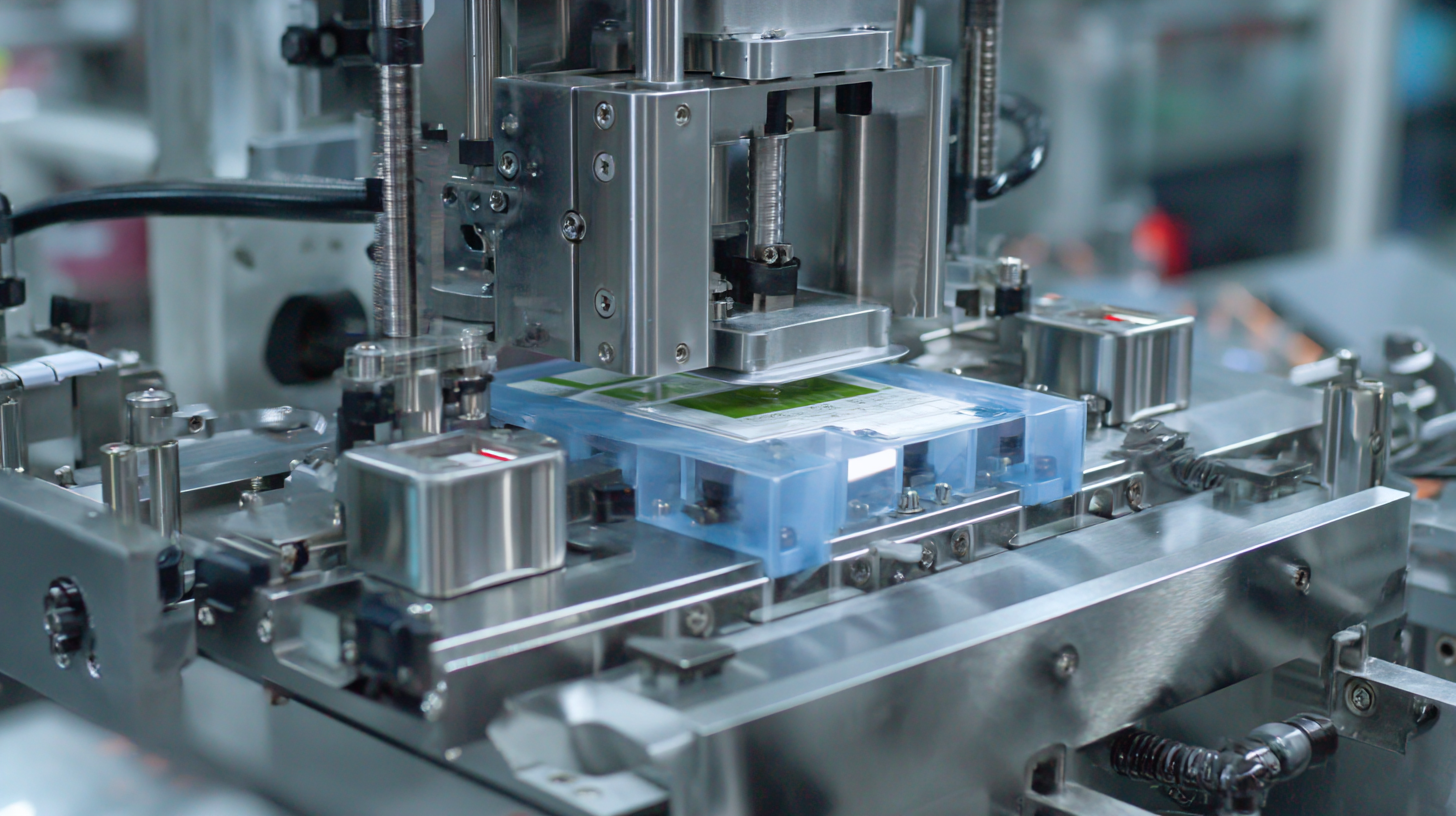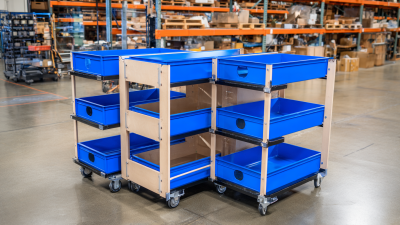Revolutionizing Packaging: How Automatic Bagging Machines Enhance Efficiency and Precision in Industries
In the fast-paced landscape of modern industries, the demand for greater efficiency and precision in packaging has never been higher. Research indicates that the global packaging machinery market is projected to grow from $46.5 billion in 2020 to $62.8 billion by 2027, highlighting an increasing focus on automation solutions. Among these, the automatic bagging machine stands out as a pivotal innovation, revolutionizing how products are packaged across various sectors, including food, pharmaceuticals, and consumer goods.

By significantly reducing labor costs and minimizing material wastage, these machines enhance operational efficiency while ensuring consistent quality in packaging. As businesses strive to meet the escalating consumer demand for swiftly dispatched goods, automatic bagging machines are not just a luxury but a necessity, enabling companies to keep up with market trends and maintain a competitive edge.
The Evolution of Packaging Techniques in Modern Industries
The packaging industry has undergone significant transformations over the years, driven by advancements in technology and changing consumer demands. Modern packaging techniques have evolved from traditional methods to include innovative solutions that enhance efficiency and sustainability. For instance, advancements in materials such as biodegradable plastics and recyclable paper have reshaped the landscape, allowing companies to align with environmental goals while still ensuring product protection and longevity.

Key Features of Automatic Bagging Machines and Their Operations
Automatic bagging machines have been a game-changer in various industries, significantly enhancing efficiency and precision. These machines are designed to streamline the packaging process, allowing businesses to meet high-volume demands while ensuring consistency in packaging quality. Key features of automatic bagging machines include adjustable bag sizes, precise filling mechanisms, and integration capabilities with existing production lines. This adaptability ensures that companies can maximize their output without compromising on standards.
Tips for optimizing the use of automatic bagging machines include regular maintenance checks to ensure all components are functioning correctly, and staff training on the operation of these machines to minimize downtime. Additionally, investing in advanced software for monitoring and controlling the bagging process can lead to further improvements in efficiency.
By employing automatic bagging machines, industries can achieve not only faster packaging speeds but also enhanced accuracy in weights and counts, which reduces waste and improves overall product integrity. This technological advancement is crucial for companies aiming to stay competitive in today's fast-paced market.
Revolutionizing Packaging: How Automatic Bagging Machines Enhance Efficiency and Precision in Industries
| Key Features | Benefits | Application Areas | Operational Efficiency |
|---|---|---|---|
| High-Speed Operation | Increased throughput and productivity | Food & Beverage, Pharmaceuticals | Reduces cycle time significantly |
| Precision Weighing | Minimizes waste and ensures consistency | Chemical Packaging, Agriculture | Enhances accuracy during packaging |
| Flexible Bagging Options | Adapts to various product types and sizes | Retail, E-commerce | Improves versatility in production lines |
| Automated Quality Control | Reduces errors and improves quality assurance | Electronics, Automotive | Streamlines the auditing process |
| User-Friendly Interfaces | Facilitates easy operation and maintenance | Manufacturing, Confectionery | Enhances staff training efficiency |
Impact of Automatic Bagging on Production Efficiency and Cost-Effectiveness
The implementation of automatic bagging machines has significantly transformed the production landscape across various industries, driving both efficiency and cost-effectiveness. According to a report by PMMI, The Association for Packaging and Processing Technologies, the packaging machinery market is projected to grow by 4.6% annually, showcasing the industry's shift toward automation. These machines facilitate rapid, consistent, and precise bagging processes, reducing manual labor and minimizing human errors that can affect production quality.

Moreover, studies indicate that businesses adopting automatic bagging systems can enhance their production efficiency by up to 25%. This improvement can be attributed to the machines' ability to operate continuously and handle varying bag sizes with minimal adjustments. Additionally, manufacturers have reported significant cost savings, with many citing reductions in labor costs of up to 40%. By streamlining operations, companies not only improve throughput but also allocate resources more effectively, contributing to a leaner production process that meets the growing demand in high-volume sectors.
Integration of Automation and Precision in Packaging Processes
The integration of automation and precision is transforming packaging processes across various industries, particularly in the semiconductor sector. As highlighted in recent market projections, the global semiconductor assembly and packaging equipment market is anticipated to grow from $9.85 billion in 2025 to approximately $20.96 billion by 2034. This significant increase underscores the demand for advanced packaging solutions that streamline operations and enhance accuracy.
Modern bagging machines are at the forefront of this revolution, employing AI-driven automation and IoT connectivity to improve efficiency. The automated packaging solutions market is forecasted to escalate from $75.54 billion in 2024 to $140.82 billion by 2033, reflecting a growing reliance on technologies that minimize labor while maximizing output and precision. By seamlessly integrating sophisticated systems, manufacturers can achieve higher levels of repeatability and quality in their packaging processes, essential for meeting the stringent requirements of today’s fast-paced markets.
Enhancing Efficiency with Automatic Bagging Machines
This bar chart illustrates the efficiency of different packaging methods. As shown, automatic packaging significantly outperforms both manual and semi-automatic methods in terms of speed, highlighting the advantages of automation in the packaging industry.
Future Trends in Bagging Technology and Industry Adaptation Strategies
The landscape of bagging technology is on the brink of transformation, driven by trends that prioritize flexibility, automation, and sustainability. Industries are increasingly adopting advanced automatic bagging machines that not only streamline production processes but also enhance overall precision. As businesses aim to meet growing consumer demands for customized packaging solutions, the integration of smart technologies such as IoT and AI is becoming essential. These innovations allow for real-time data analysis, optimizing operations and reducing waste throughout the packaging process.
Moreover, adaptability in packaging strategies is crucial as companies face rapid shifts in market needs and environmental regulations. The shift towards eco-friendly materials is prompting manufacturers to re-evaluate their bagging systems and incorporate biodegradable options without sacrificing performance. Additionally, the move to incorporate agility in production facilitates quick changes to packaging configurations, accommodating a diverse range of products. Industries that embrace these future trends will not only improve efficiency but also solidify their market position by appealing to an increasingly environmentally conscious consumer base.

